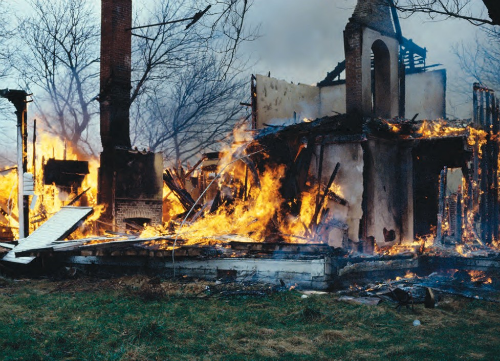Are your employees truly prepared for a natural disaster? In the event of a catastrophic event, how resilient will your employees be?
In light of the devastation brought on by recent natural disasters around the country, including the wildfires recently experienced throughout California, it’s pretty apparent that the current disaster preparedness message of “Get A Kit, Make A Plan, Be Informed” is missing something. If you take a close look at the disaster preparedness information that is typically promoted, you will find that it is almost entirely focused on personal safety and survival. Although these topics are extremely important to prevent loss of life and should not be downplayed, there is a critical piece missing that is crucial to the long-term effect and outcome of disasters.
Have you ever wondered why so many homes that are damaged or destroyed by disasters never get rebuilt? Or why there are so many foreclosures and families who become permanently displaced? What happens when you don’t have adequate insurance or FEMA can’t give you enough to make your home livable again? What if your life savings is in the equity of your home and you can’t afford to pay for repairs out of your pocket? What if you can’t afford to pay your mortgage and temporary housing or if your mortgage company withholds your insurance proceeds? What if your home is contaminated with flood water, sewage, mold, asbestos, or other hazards? These and a wide range of other issues are likely to hinder employees from returning to their homes – and simply having a kit or knowing how to survive will be of little value in terms of their ability to rebuild their lives.
Most business emergency plans exclude employees because the focus is on IT, cyber security, supply chains and other infrastructure details. However, these plans aren’t much good if the employees’ homes are destroyed and they can’t go to work because they are stuck trying to figure out how to take care of themselves and their families’ needs.
“Resilience” is supposed to mean the ability to recover, rebound, and come back to a state stronger than before. However, most if not all of the current preparedness messaging is about safety and survival, which is really more about disaster “resistance” rather than resilience. So, getting a kit and stockpiling supplies, making a plan to evacuate, and knowing what to do if separated from loved ones, etc. has little to do with rebuilding your life. So, what can we do to enhance the current preparedness message to better promote resiliency? One thought is to help people map out a strategy and plan for recovery in advance.
Here are ten ways you can plan for recovery and strengthen your employees’ resiliency to disasters:
1) Have employees assess their risks to fire, flooding, trees falling on their homes, etc. and take steps to protect their property by correcting drainage problems, creating defensible space, etc.
2) Whether an employee owns a home or rents, they should make sure they have adequate insurance to replace the home and contents.
3) If possible, anyone should open a home equity line of credit that can be used in the event they need to borrow money to make repairs. Banks typically won’t loan money on a home that is heavily damaged or destroyed, so having this money available ahead of time can really help, especially in cases where the damages are not covered by insurance or when FEMA can’t help.
4) Make a list of vetted local contractors, roofers, and other disaster restoration service providers so your employees will know who to call when they need one.
5) Everyone should have a plan for where they will stay in the event their homes become unlivable or destroyed.
6) Find out what it takes to get utilities restored if electric or gas is shut off or the meters are removed.
7) Learn what the recovery process entails and what could keep employees from rebuilding. Talk to those who have gone through a disaster before and jot down the lessons they learned so your team can avoid mistakes others have made.
8) Everyone should make copies of the building plans of their homes and get estimates of what it would cost to rebuild, if needed.
9) If your employees have insurance, they may run into problems with the claim process. Visit United Policyholders and their Claims Help Library at www.uphelp.org/resources/ claim-help to find out what challenges might be faced.
10) Encourage employees to make copies of important or irreplaceable items such as family photos, awards or citations, recipes, etc., and store them in the cloud or in a safe place off site.
Sean Scott is the author of ‘The Red Guide to Recovery – Resource Handbook for Disaster Survivors.’ A comprehensive reference designed to help property owners before and after a natural disaster, the Red Guide is now used by fire departments, relief organizations, government agencies, and communities across the U.S. The Red Guide to Recovery is helping countless people prepare for and recover from disaster events. It is Sean’s hope that this book will empower individuals, families, and whole communities to make sound decisions in the midst of one of life’s most difficult trials. Scott has spent over 32 years in the construction and restoration industry helping thousands of families restore their homes, businesses, and lives. To learn more, visit theredguidetorecovery.com

